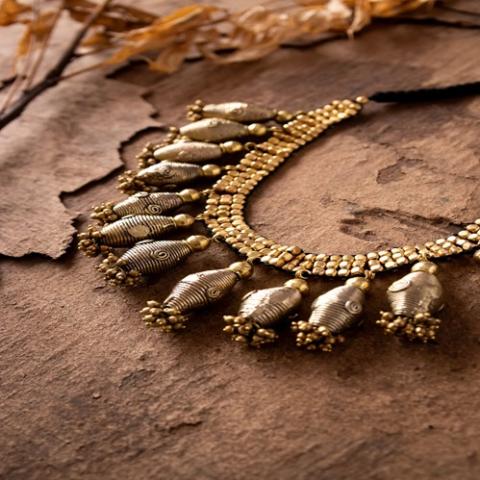Sensuality is an unspoken language, a flowing current of allure woven into moments, glances, and the elegance of movement. It transcends physicality, existing instead in the subtle interplay of confidence, mystery, and self-expression. Jewelry, in its silent brilliance, is a collaborator in this dance, accentuating the wearer’s essence while becoming an extension of desire itself. The shimmer of a necklace catching the light, the soft clink of a bracelet, or the hypnotic sway of earrings—these elements do more than adorn; they tell stories, seduce the gaze, and draw boundaries between the seen and the imagined.
The body, when adorned, transforms into a canvas of sensual expression. A delicate necklace resting near the collarbone invites the viewer’s gaze to the neckline—a space often associated with vulnerability and strength. This duality speaks directly to the core of human attraction. Cleopatra, for instance, famously draped herself in elaborate gold and gemstone collars, not merely to flaunt her wealth but to frame her face and imbue her presence with an almost mythical power. Jewelry, for her and countless others, was never just decoration but an integral part of identity and allure.
The seductive power of jewelry lies in its capacity to highlight, frame, and suggest. A pair of earrings, swaying lightly with each turn of the head, captures fleeting glances, framing the face—the origin of expressions that ignite curiosity. Bracelets on the wrists accentuate gestures, while rings, small yet potent, often speak of elegance, status, or mystery. Each piece, from anklets to tiaras, is a calculated invitation to linger a little longer, to observe a little closer.
Material itself carries a sensuality that words often fail to capture. Gold, with its radiant warmth, evokes the touch of sunlight, a timeless symbol of vitality and prosperity. Silver, cooler and reflective, mimics moonlight, exuding an ethereal charm. The textures of gemstones add layers of depth: the passionate depth of a ruby, the serene coolness of a sapphire, or the soft, organic luster of a pearl. The choice of these materials is rarely arbitrary. It mirrors the wearer’s desires, their inner world brought to life in hues and textures. A ruby may symbolize boldness, while pearls evoke a quiet, understated grace.
Craftsmanship deepens this allure. Handmade imperfections tell a story of human touch, of hours spent creating something that transcends functionality. The filigree patterns, the careful placement of stones, and the thoughtful balance of weight and proportion all work together to make a piece not just jewelry, but an experience. Wearing such a piece feels personal, almost sacred—a reminder that sensuality begins not with external validation but with self-recognition.
Cultural history reveals the intimate relationship between jewelry and sensuality. Across centuries and continents, adornment has been a way to signal attraction, commitment, and even fertility. In India, anklets were traditionally worn by women as subtle but deliberate signals of their presence, their rhythmic jingles transforming ordinary steps into a graceful melody. During the Renaissance, elaborate brooches and hairpieces adorned European women as expressions of their desirability and sophistication. The Victorians, reserved yet quietly provocative, used lockets and cameos to carry secret tokens of love close to their skin, hiding their sensuality in plain sight.
The psychology of attraction plays an undeniable role in why jewelry captivates so deeply. Diamonds, with their sparkling clarity, mimic the glint of sunlight on water—a symbol of abundance, vitality, and life. A dangling pendant mirrors the rhythm of natural movement, drawing attention to the chest and creating an unconscious allure. Jewelry, in its interplay of exposure and concealment, teases the imagination. A necklace that dips below the neckline hints at hidden mysteries, while a bold cuff bracelet draws attention to the curve of the wrist and forearm. These subtle cues are not accidental; they are part of jewelry’s timeless dialogue with human desire.
Jewelry is also empowerment. Sensuality is not merely about being seen; it is about feeling. A bold pair of earrings can make a woman feel invincible; a delicate ring might remind her of her inherent grace. Jewelry is as much about the inner experience as it is about the outward display. It provides the wearer with the freedom to experiment, to play with their identity, and to express facets of themselves that words may fail to convey.
This intimate relationship between adornment and allure is timeless yet ever-evolving. In every era, jewelry adapts, mirroring societal changes and personal desires while retaining its core function: to beautify, to empower, and to suggest. Today, minimalism often takes the stage, but even the simplest pieces carry the same power as Cleopatra’s elaborate adornments or a Victorian locket’s hidden charm. The essence of jewelry lies in its ability to transform—to turn the ordinary into the extraordinary, to make the wearer feel not just adorned but alive.
The dance of jewelry and sensuality is one of infinite complexity. It is a language without words, a dialogue between material and emotion, between the body and the observer’s gaze. In its shimmering silence, jewelry reminds us that sensuality is not a single quality but a symphony—a movement through moments, textures, and reflections, all coming together to create something greater than the sum of its parts. In this dance, jewelry is not merely an accessory but an active participant, forever entwined with the art of seduction.









